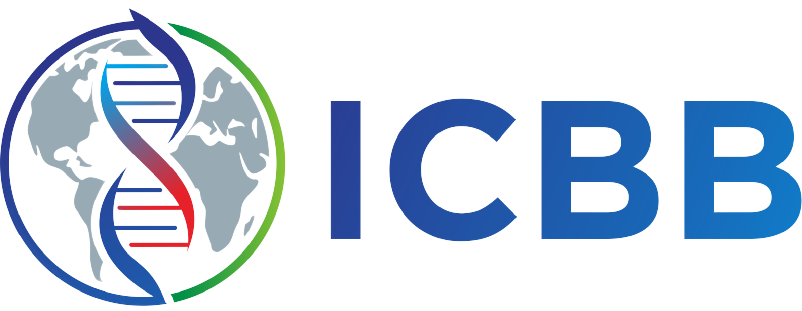Application of Liquid Fertilizer Trichoderma harzianum (R3) on Siam Citrus (Citrus nobilis var. microcarpa)
Authors
Nur Asiah , Rahmawati Rahmawati , Mukarlina Mukarlina , Siti KhotimahDOI:
10.29303/jbt.v25i2.9029Published:
2025-05-30Issue:
Vol. 25 No. 2 (2025): April-JuniKeywords:
Citrus nobilis var. Microcarpa, fertilizer, growth, Trichoderma harzianum.Articles
Downloads
How to Cite
Downloads
Metrics
Abstract
An economically significant fruit in West Kalimantan is the Siam orange (Citrus nobilis var. microcarpa). Low fertility is a problem for Siam orange cultivation in the region's vast peatlands; Trichoderma sp. fertilizer can promote organic matter breakdown, increase nutrient availability, and aid in plant growth. This study aimed to evaluated the effect of liquid T. harzianum (R3) on Siam orange seedlings in peat soil. The study employed a completely randomized design (CRD) with four replications for each of the five treatments: control (0), 5, 15, 25, and 35 mL/L of T. harzianum (R3). Plant height, leaf count, root length, wet weight, dry weight, and chlorophyll content (a, b, and total) were among the parameters that were measured. The application of liquid T. harzianum (R3) had a significant impact on all growth metrics, including chlorophyll a and total chlorophyll content, according to the analysis of variance test. The most effective method for promoting the growth of siam orange seedlings was the application of 25 mL/L of liquid T. harzianum (R3).
References
Baihaqi A, Nawawi M, & Abadi AL. (2013). Teknik Aplikasi Trichoderma sp. Terhadap Pertumbuhan dan Hasil Tanaman Kentang (Solanum tuberosum L.). Jurnal Produksi Tanaman, 1(3): 30-39.
BPS. (2021). Kalimanatan Barat dalam Angka. Pontianak: Badan Pusat Statistik (BPS) Kalimantan Barat.
Chagas LFB, Chagas JAF, Rodrigues de Carvalho M, de Oliveira Miller L. & Orozco CBS. (2015). Evaluation of the phosphate solubilization potential of Trichoderma strains (Trichoplus JCO) and effects on rice biomass. Journal of Soil Science and Plant Nutrition, 15(3): 845–857. DOI: http://dx.doi.org/10.4067/S0718-95162015005000054
Fifendy M, Eldini & Irdawati. (2013). Pengaruh Pemanfaatan Molase Terhadap Jumlah Mikroba dan Ketebalan Nata pada Teh Kombucha. Prosiding SEMIRATA FMIPA. Biologi FMIPA Universitas Negeri Padang.
Hadi P, Suyanto D, Prabowo S., & Rachmawatie S. (2022). Pengaruh Konsentrasi dan Metabolik Sekunder Trichoderma harzianum Terhadap Pengendalian Penyakit Blas, Pertumbuhan dan Produksi Tanaman Padi (Oryza sativa L.). Agroradix: Jurnal Ilmu Pertanian, 5(2): 18-26. DOI: https://doi.org/10.52166/agroteknologi.v5i2.3124
Hermanto SR, & Jatsiyah V. (2018). Karakteristik Sifat Kimia Lahan Gambut Yang Di Konversi Menjadi Perkebunan Sawit Di Kabupaten Ketapang. Chempublish Journal, 3(2): 32-39. DOI: http://dx.doi.org/10.22437/chp.v3i2.5662
Kristiandi K, Fertiasar R, Yunita NF, Astuti TW. & Sari D. (2021). Analisis Produktivitas dan Luas Tanaman Jeruk Siam Sambas Tahun 2015-2020. Jurnal Pemikiran Masyarakat Ilmiah Berwawasan Agribisnis, 7(2): 1747-1755. DOI: http://dx.doi.org/10.25157/ma.v7i2.5607
Kumar A, Patel A, Singh SN, Tiwari RK. (2019). Effect of Trichoderma spp in plant growth promotion in chili. Int J Curr Microbiol. Appl.Sci, 8(3):1574-1581. https://doi.org/10.20546/ijcmas.2018.803.182.
Kurniastuti, T., Puspitorini, P., & Febrin, R. (2021). Respon Tanaman Cabai Rawit (Capsicum frutescens L.) Terhadap Aplikasi Trichoderma sp. pada Beberapa Media Tanam. Agrika: Jurnal Ilmu-Ilmu Pertanian, 15(2): 79-87. DOI: https://doi.org/10.31328/ja.v15i2.2598
Lahati BK, Sabban H, & Abdullah H. (2022). Uji interaksi Agen Hayati Trichoderma dan Bokashi Sebagai Stimulator Pertumbuhan Tanaman Cabai (Capsicum annum). Agrikan: Jurnal Agribisnis Perikanan. 15(2): 555-562. DOI: https://doi.org/10.52046/agrikan.v15i2.1280.
Lehar L. (2012). Pengujian Pupuk Organik Agen Hayati (Trichoderma sp.) terhadap Pertumbuhan Kentang (Solanum tuberosum L). Jurnal Penelitian Pertanian Terapan, 12 (2): 115-124. DOI: https://doi.org/10.25181/jppt.v12i2.206
Li RX, Cai F, Pang G, Shen QR,Li R. & Chen W. (2015). Solubilisation of Phosphate and Micronutrients by Trichoderma harzianum and its relationship with the Promotion of Tomato Plant Growth. Plos One 10(6), e0130081. https://doi.org/10.1371/journal.pone.0130081.
Nevianty, N., Fatman, M., & Adnan. (2025). Pengaruh komposisi media tanah, arang sekam, dan pupuk kandang ayam terhadap pertumbuhan dan hasil produksi tanaman selada hijau (Lactuca sativa L). Jurnal Agroterpadu, 4(1): 53-61. DOI: http://dx.doi.org/10.35329/ja.v4i1.6076
Nisa C. (2018). Pengujian Formulasi Trichoderma sp. Terhadap Pencegahan Patogen Fusarium oxysporum Penyebab Penyakit Layu Pada Cabai Rawit (Capsicum frutescens) Secara In Vivo. [Skripsi]. Malang: Universitas Islam Negeri Maulana Malik Ibrahim.
Nuraini P, Budianta D. & Fitri SNA. (2021). Pengaruh Pemberian Dolomit dan Pupuk Kandang Sapi Terhadap Pertumbuhan dan Produksi Tanaman Kedelai (Glycine max (L) Merr di Tanah Ultisol. Jurnal Agri Peat, 22(1): 21-32. DOI: https://doi.org/10.36873/agp.v22i01.3309
Prayoga, Dalimunthe BA, Walida H. & Septyani IAP. (2022). Analisis Sifat Kimia Tanah di Lahan Gambut Perkebunan Kelapa Sawit PT Herfinta Desa Tanjung Medan. Jurnal Pertanian Agros, 24(2): 592-597. DOI: http://dx.doi.org/10.37159/jpa.v24i2.1952
Primilestari S, & Purnama H. (2019). Teknologi Budidaya Jeruk di Lahan Gambut untuk Meningkatkan Produktivitas dan Pendapatan Petani di Kabupaten Tanjung Jabung Barat. Prosiding Seminar Nasional Lahan Suboptimal. Palembang: Unsri Press.
Rasyidi, A. F., Sulistiani, R., & Jalani, S. I. B. (2024). Kadar klorofil daun bibit kelor (Moringa oleifera L.) pada berbagai dosis kompos. Agrium, 27(1): 32–43.
Rizal S, Novianti D. & Septiani M. (2019). Pengaruh Jamur Trichoderma sp. Terhadap Pertumbuhan Tanaman Tomat (Solanum lycopersicum L.). Jurnal Indobiosains, 1(1): 14-21. DOI: https://doi.org/10.31851/indobiosains.v1i1.2297
Rodriquez MCH, Evans HC, de Abreau, LM, de Macedo DM, Ndacnou, MK, bejele KB,. & Barreto RW. (2021). New species and record of Trichoderma isolated asmycoparasites and endophytes from cultivated and wild coffee in Africa. Sci.Rep. 11 (5671): 1-30. DOI: https://doi.org/10.1038/s41598-021-84111-1
Rohmah IN. & Alif T. (2021). Uji Pengembangan Spora Entomopatogen Bunga Entomopatogen Lecanicillium lecanii Menggunakan Haemocytometer. Jurnal Matematika & Sains, 1(2): 143-150. DOI: https://doi.org/10.55273/jms.v1i2.129.
Rosmana A, Nasarudin N, Hendarto, H, Hakkar, AA, & Agriansyah N. (2016). Endophytic association of Trichoderma asperellum within Theobroma cacao suppresses vascular streak dieback incidence and promotes side graft growth. Mycrobiology. 44(3): 180-186. DOI: 10.5941/MYCO.2016.44.3.180
Sudantha IM, Suwardji, Aryana IGPM., Pramadya IMA. & Jayadi 1. (2018). Respon Pertumbuhan dan Hasil Beberapa Varietas Bawang Merah Akibat Penggunaan Dosis Biokompos Trichoderma Cair. Seminar Nasional. Mataram: Fakultas Pertanian Universitas Mataram. DOI: https://doi.org/10.26418/plt.v1i2.408
Sutarman & Prahasti, T. (2022). Uji Keragaan Trichoderma sebagai Pupuk Hayati dalam Meningkatkan Pertumbuhan dan Produksi Tanaman Bawang Merah. Jurnal Agrotek Tropika, 10(3): 421-428. DOI: http://dx.doi.org/10.23960/jat.v10i3.5737
Sutrisno DK, Hartatik S. & Dewanti P. (2022). Peranan Trichoderma Terhadap Pertumbuhan dan Hasil Tanaman Kedelai (Glycine max) pada Kondisi Cekaman Kekeringan. Jurnal Agroteknologi dan Agribisnis, 6(1): 79-82. DOI: https://doi.org/10.30737/agrinika.v6i1.2339
Syam N, Hidrawati & Aminah. (2022). Response Pertumbuhan Setek Lada (Pepper nigrum L.) Terhadap Waktu Aplikasi Trichoderma dan Konsentrasi Pupuk Organik Cair. Biofarm: Jurnal Ilmiah Pertanian, 18(2). DOI: http://dx.doi.org/10.31941/biofarm.v18i2.2295
Wang J, Mu H, Liu S, Qi S. & Mou S. (2024). Effects of Trichoderma harzianum on Growth and Rhizosphere Microbial Community of Continuous Cropping Lagenaria siceraria. Microorganisms,12(10):1987. DOI: http://dx.doi.org/10.3390/microorganisms12101987
Yulistia G. (2022). Pengaruh Aplikasi Formulasi Cair Trichoderma sp. dalam Media Molase Terhadap Perkembangan Penyakit Bulai dan Pertumbuhan Tanaman Jagung (Zea mays L.). [Skripsi]. Bandar Lampung: Fakultas Pertanian Universitas Lampung.
Yunita, N.F., Kristiandi, K., Fertiasari, R., & Sigiro, O.N. (2021). Pemetaan tingkat produktifitas jeruk siam di Kabupaten Sambas tahun 2015-2020. Agrohita: Jurnal Agroteknologi Fakultas Pertanian Universitas Muhammadiyah Tapanuli Selatan, 6(1): 53–63. DOI: http://dx.doi.org/10.31604/jap.v6i1.3601
Zhao DL, Yang LJ, & Shi T. (2019). Potent Phytotoxic Harziane Diterpenes from a Soft Coral-Derived Strain of the Fungus Trichoderma harzianum XS-20090075. Scientific Reports, 9: 13354. DOI: https://doi.org/10.1038/s41598-019-49778-7
License
Copyright (c) 2025 Nur Asiah, Rahmawati, Mukarlina, Siti Khotimah

This work is licensed under a Creative Commons Attribution 4.0 International License.

Jurnal Biologi Tropis is licensed under a Creative Commons Attribution 4.0 International License.
The copyright of the received article shall be assigned to the author as the owner of the paper. The intended copyright includes the right to publish the article in various forms (including reprints). The journal maintains the publishing rights to the published articles.
Authors are permitted to disseminate published articles by sharing the link/DOI of the article at the journal. Authors are allowed to use their articles for any legal purposes deemed necessary without written permission from the journal with an acknowledgment of initial publication to this journal.


























